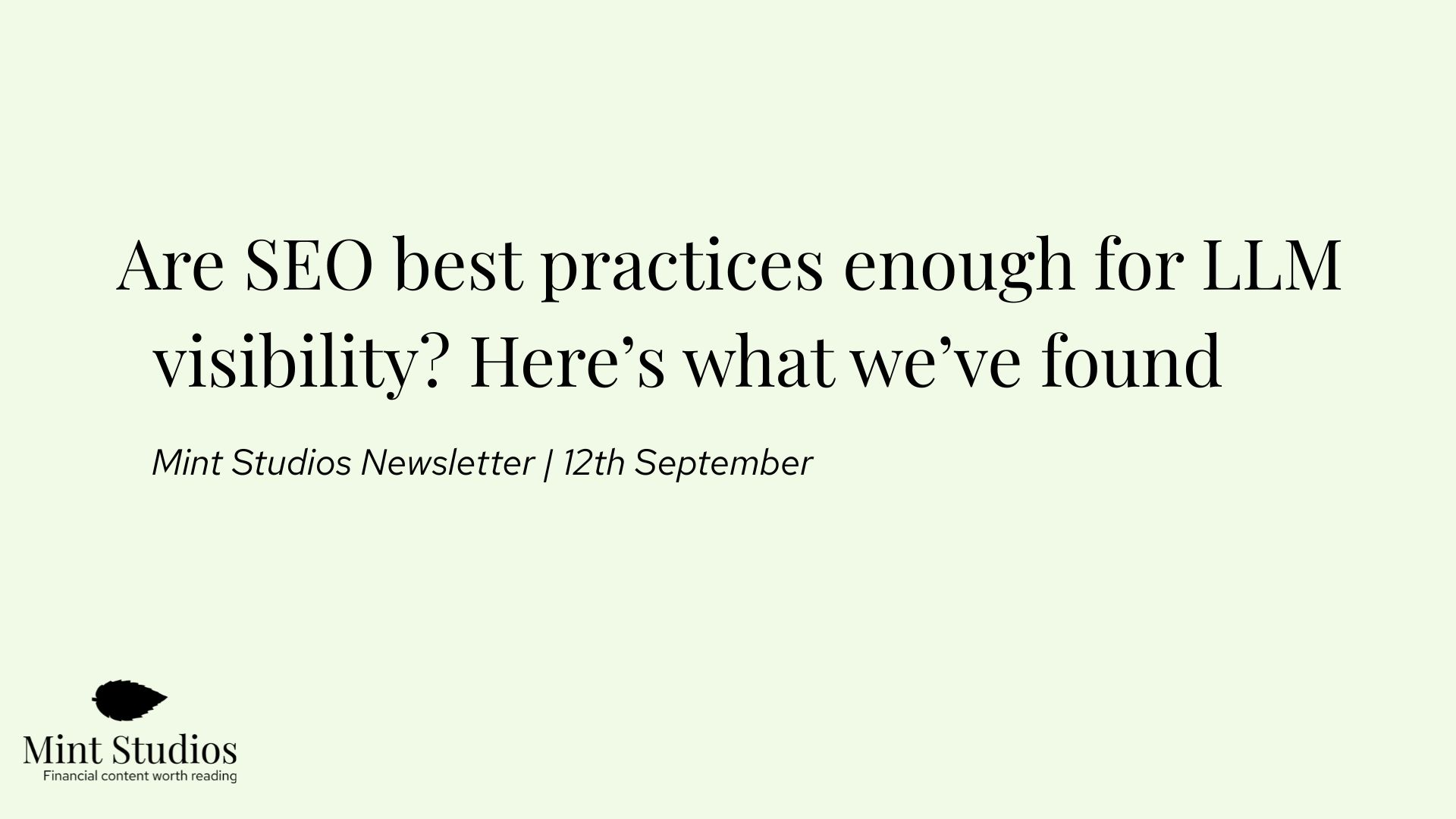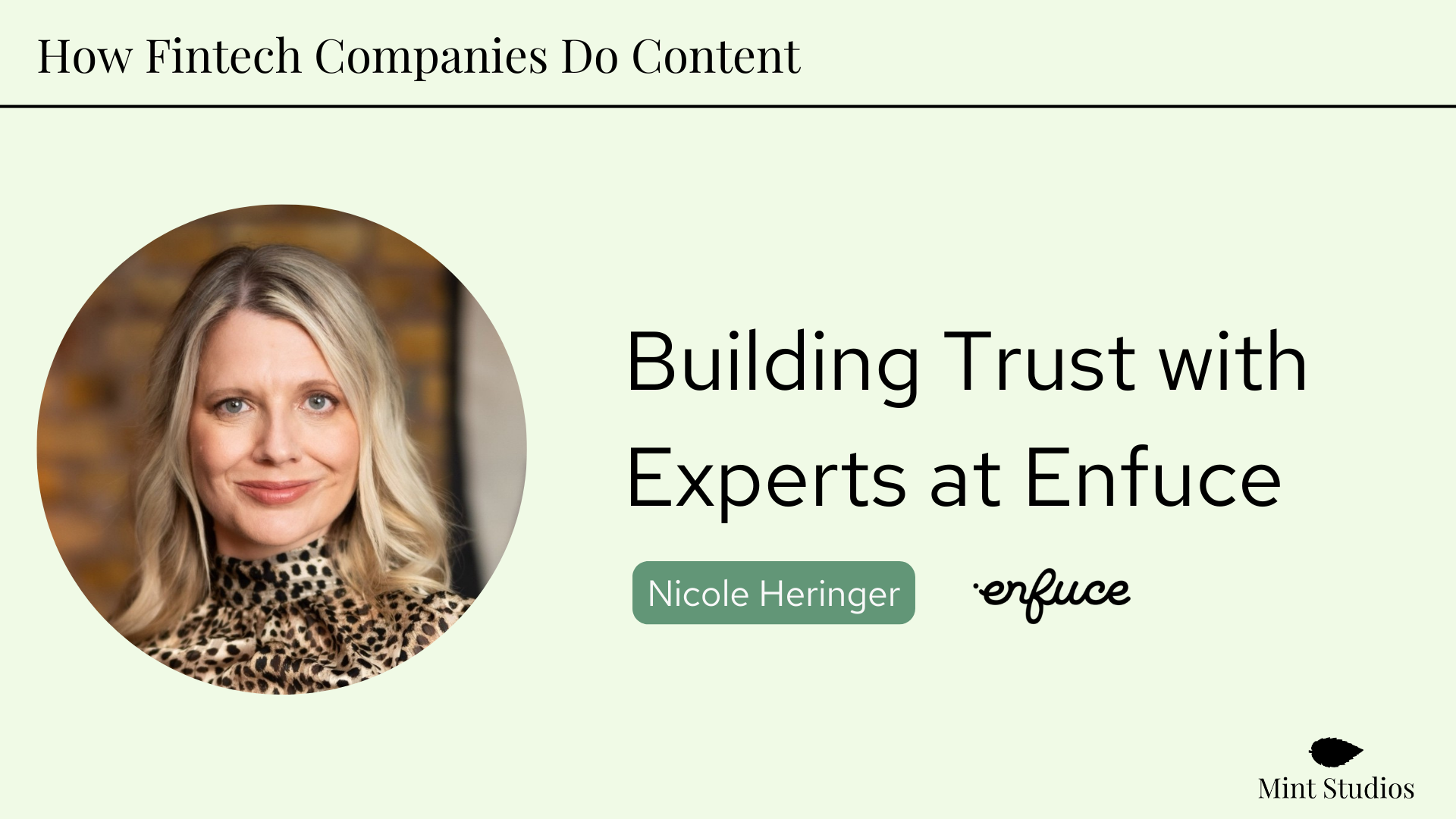Results overview:
- Grew number of inbound leads via organic
- Got the conversion rate of "first engaged” and “qualified lead” has also been hovering between a healthy 15% - 20% conversion rate.
- Top converting articles have a conversion rate of pageview to qualified lead as high as 2.4%.
- Ranking on the first page of Google for key buying words like venture debt lenders, best cash back business credit cards”, company credit cards for employees
The case study:
As a VC backed, fast growing company, Jeeves needed a content partner that could help create content for the entire marketing funnel, raise awareness for the Jeeves product and bring in qualified leads.
In this case study, we want to go through our work with Jeeves over the past year (still counting), and how Jeeves leverages our content for three main purposes:
- Customer acquisition
- Product awareness
- Education
Let’s dive in!
The situation: Jeeves needed a flexible content partner that could bring in leads
When we first started working with Jeeves, they were working with a full service marketing agency that did PPC, SEO and website maintenance. Although they did good work, they didn’t specialise in fintech and generating leads with content.
In such a competitive environment (business credit cards), Jeeves knew they needed to create content that would help them stand out, while also helping them hit monthly targets.
Not only that, but they needed a content partner that could be flexible. Jeeves launches new products and features regularly and the industry is constantly evolving. This meant it was even more important that they had a content partner that was agile, flexible and could work quickly.
The results
With Jeeves we focused on four key metrics:
- First engaged lead
- Qualified lead
- Organic traffic
- Rankings
In order to count as a qualified lead, the user needs to complete a multi-step form that asks them information about their company’s monthly revenue, how long they’ve been operating for and whether they have funding.
The user can only successfully complete the multi-step form if they qualify according to Jeeves’ criteria. That means that the number of qualified leads you see below have a high probability of becoming customers.
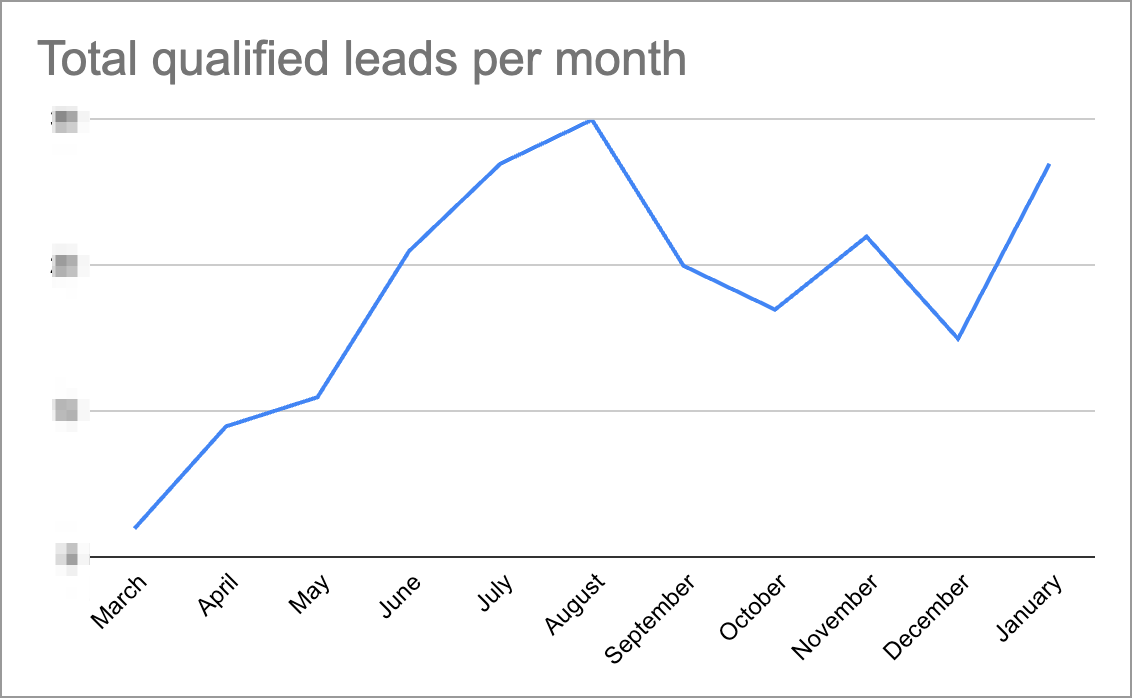
The conversion rate between “first engaged” and “qualified lead” has also been hovering between a healthy 15% - 20% conversion rate.
With the type of content we create, our top converting articles have a conversion rate of pageview to qualified lead as high as 2.4%.

Jeeves is also ranking on the first page of Google for some key phrases that are closely related to their product and brand.
Ranking #1 in the UK for “venture debt lenders”
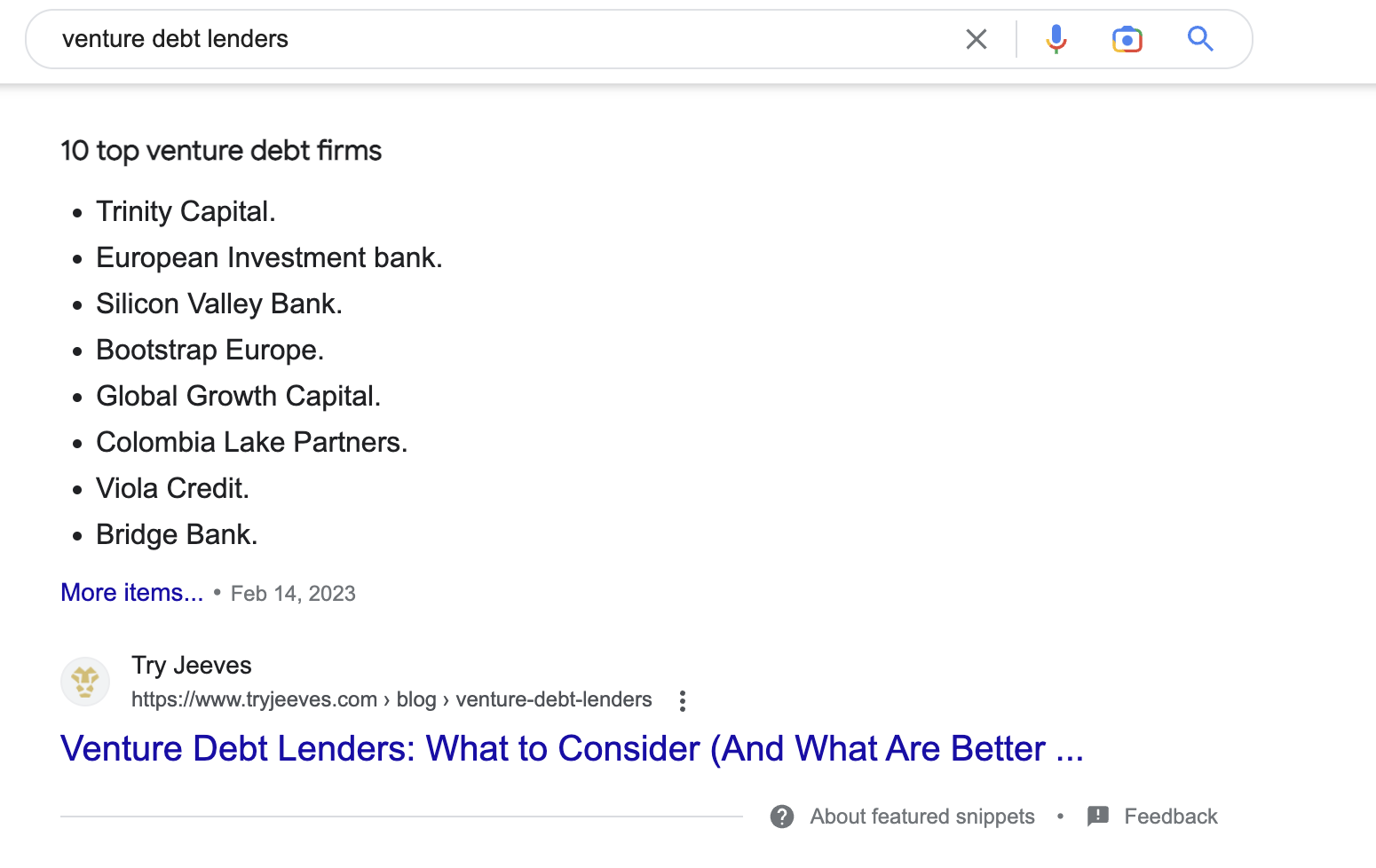
Ranking #3 in UK for “best cash back business credit cards”

Ranking #1 in the US for “cash flow credit card”
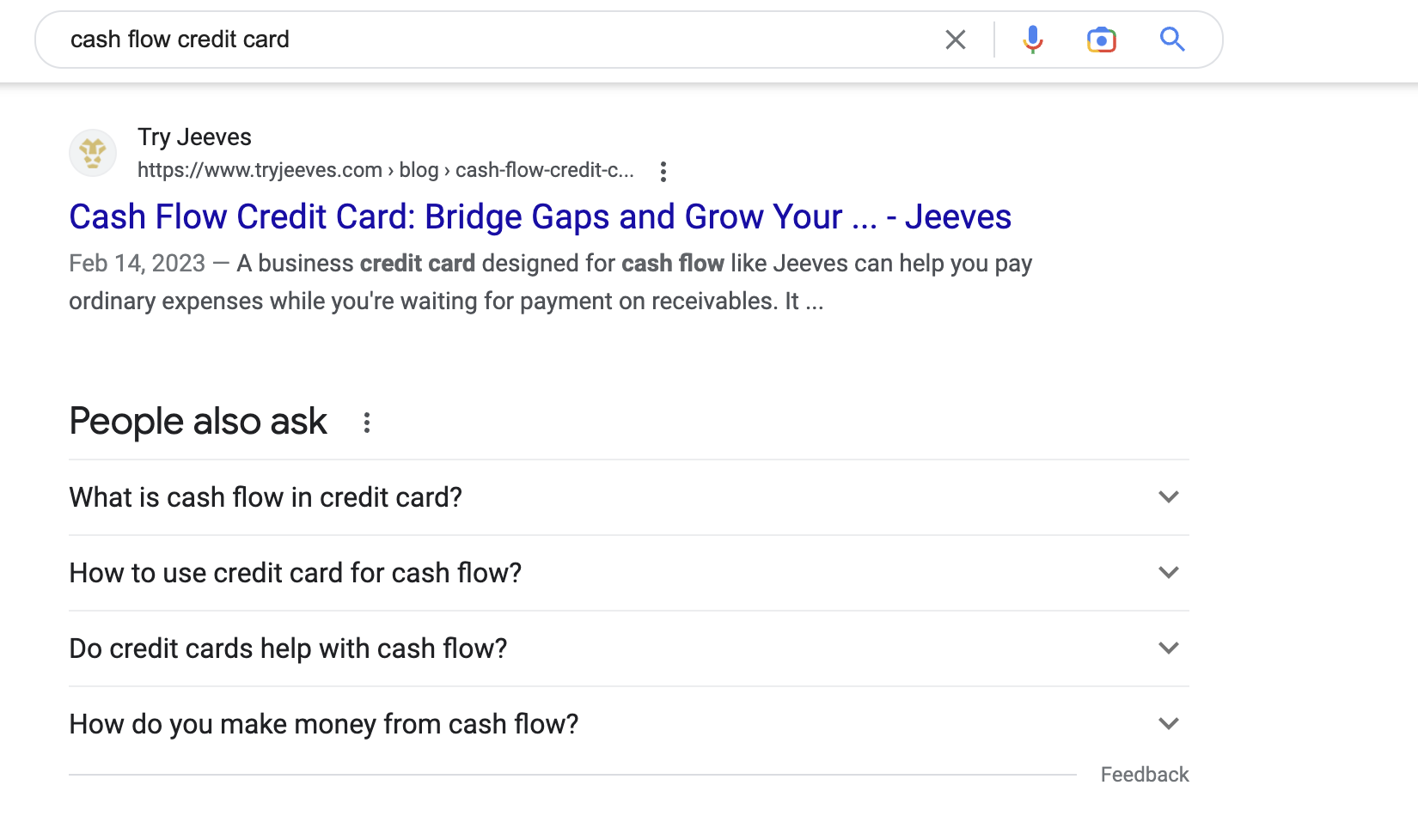
Ranking #3 for “company credit cards for employees”
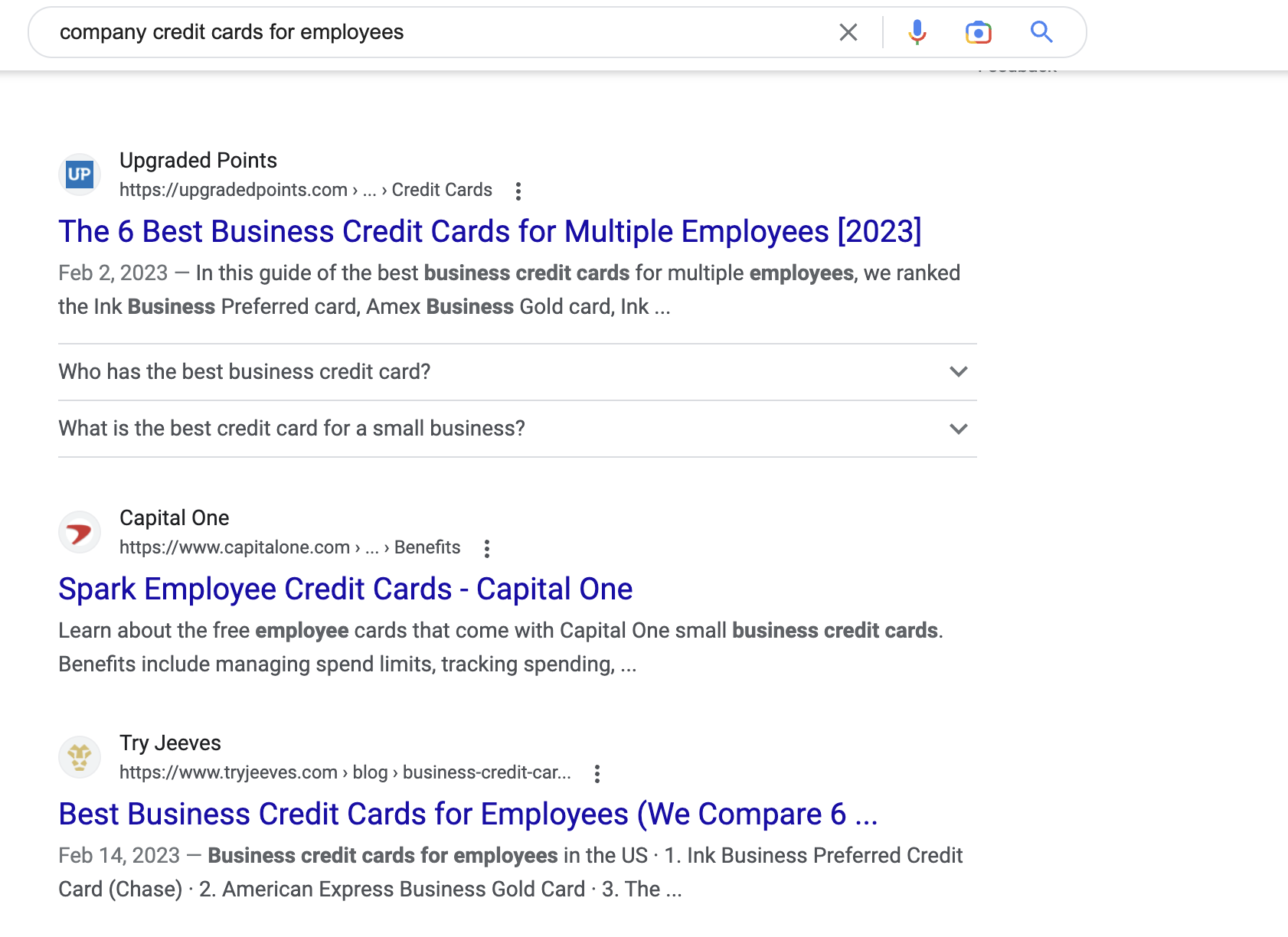
So how did we do it? Although we did start off by creating Bottom of the Funnel content, we made sure the content we created also helped raise awareness for the Jeeves product and positioned them as an expert. We also moved up the funnel and created middle and top of the funnel content.
How did we do it? Multi-purpose articles and focusing on customers
Jeeves was close to partnering with a different content partner who was taking the keyword first approach: researching top keywords and targeting them. This approach would have generated a good number of traffic (perhaps even higher than what they have now) – but it would not have brought in as many qualified leads as we bring in now.
Like many startups, Jeeves was focused on growth and therefore it made sense to partner with a content agency that would help meet their customer acquisition targets, not just an increase in traffic.
A content strategy based on customer research
When it comes to launching a content programme, many marketers don’t have a structured process to coming up with content ideas. They’ll brainstorm with their team, check what keywords their competitors are searching for and maybe do some research online.
The result is then content ideas that aren’t focused on a specific objective, and that ultimately won’t help the company reach their goals. More importantly, you end up with content that your target market won’t read.
As per our usual process, when we started working with Jeeves we followed a methodical approach. We sat down with the sales, product and growth team, and did multiple interviews where our objective was to uncover two things:
- Who is Jeeves’ best customer?
- What are their pain points and challenges?
Only after those conversations did we start doing research for keywords with purchase-intent and begin working on the content strategy.
Read more: How to Do Research for Bottom of the Funnel Content Marketing
What’s more, whenever Jeeves launches a new product or feature, we interview a key person on their team to make sure we understand the product, who they’re targeting and what pain points we should focus on.
This strong foundation for content strategy allows us to create content targeting the right people, no matter whether we wrote bottom, middle or top of the funnel content.
Content that targets people who are making a decision
We started out by creating content targeting people who are closer to making a purchase decision (sometimes called Bottom of the Funnel).
Since we had done interviews that helped us understand Jeeves’ best customers’ pain points and challenges, we knew where to get started. Some examples of the keywords we decided to target are:
- Business credit card for startups
- Cash flow credit card
- Virtual business credit card
- Corporate expense cards
As you’ve seen in the results section above, Jeeves is now ranking on the first page for many of these buying intent keywords.
Content that raises awareness for the Jeeves product
Creating an article titled “What is a credit card” will raise awareness for Jeeves, but it would raise awareness for people who might never consider working with a Jeeves credit card.
Instead, it makes more sense to raise awareness by targeting people who are in-market and more likely to buy.
What’s so powerful about creating content that targets keywords on Google, is that we can also create content that targets people who are aware of their problem, but don’t know that Jeeves could solve it for them.
You can do this by:
- Targeting people who are aware of your competitors but not you.
- Targeting people that don’t know your product exists but are searching for solutions to their pain point.
Targeting people who are aware of your competitors but not you: one great way to raise awareness is to piggyback off other companies’ brand awareness. In such a competitive space like credit cards, we knew people would be doing research and comparing different products.
For example, Payhawk and Spendesk are well-known spend management tools in the UK. By creating an article titled “Payhawk vs Spendesk vs Jeeves”, we could piggyback off of their brand awareness, and raise awareness for Jeeves as a possible alternative. Jeeves is now ranking in #1 for “Payhawk vs Spendesk”, which is an article generating qualified leads.
Related: Why You Should Write About Your Competitors as a Fintech Company
Targeting people that don’t know your product exists but are searching for solutions to their pain point: another tactic is to target people who might be looking for something else, or just typing their challenge into Google.
For example, someone typing "venture debt lenders" is clearly looking for a funding alternative to venture capital. They probably don't want to dilute their business more than necessary and have found venture debt to be a solution.
Even though Jeeves isn't a venture debt lender, we decided to target this keyword but with an angle that educates the reader on alternatives to venture debt, and explain why Jeeves might be a good solution for them.
We would only be able to uncover these pain points by having conversations with the sales team. The articles we publish raise awareness for the Jeeves product, and also bring in qualified leads. It’s a win win.
Content that positions Jeeves as an expert
There is a lot of competition out there in the business spend management space, which means there is no point in writing more generalist, paraphrased content.
So from the beginning, we made sure to write content based on the experts on the Jeeves team. One example of the topic is “How to extend your runway as a startup”.
If you check the current results, they’re all very similar and essentially paraphrasing each other’s content. We wanted to go deeper, so we interviewed former a16z investor Matthieu Haffemeister (who was their Head of Partnerships) and we were able to dive really deep. Here are some excerpts of the article:
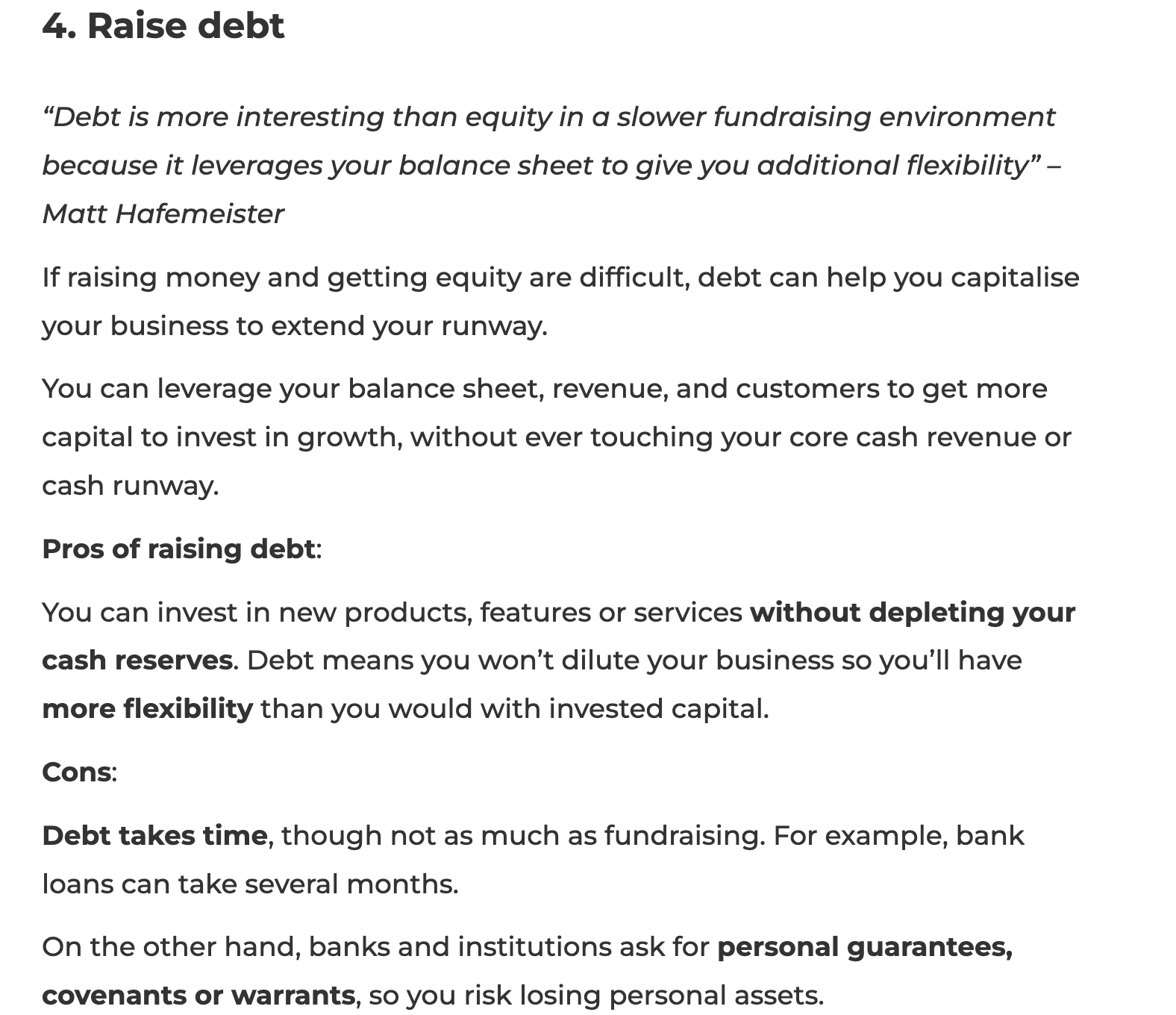
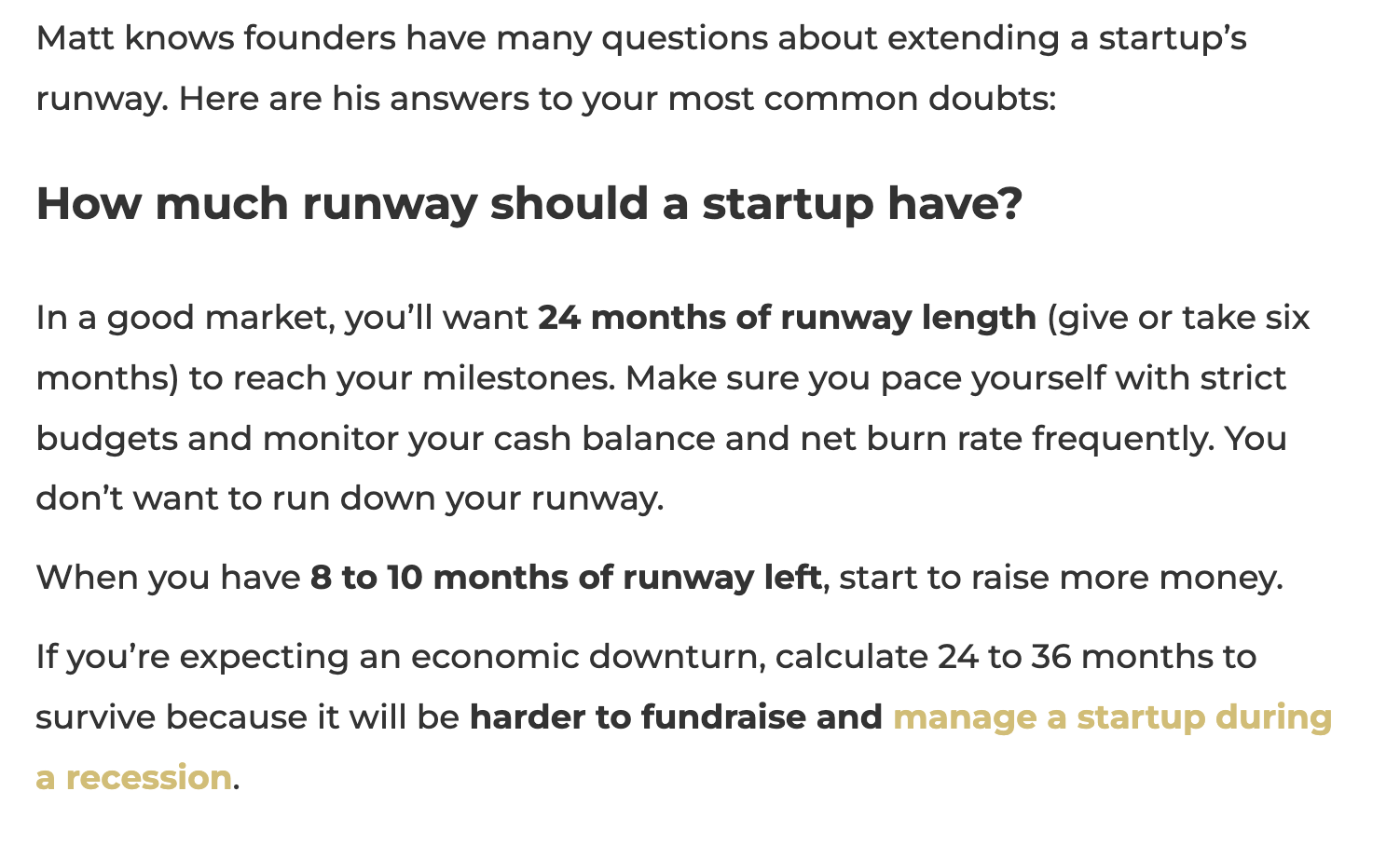
Our article targeting “venture debt lenders” was more in-depth than a simple list of lenders:

This type of content is often even more effective than “thought leadership” content, because we’re also targeting the right people.
This type of content is targeting people who are already in-market and looking for a solution to their problem. Making sure it’s expert-based and in-depth means you’re a lot more likely to be seen as an expert. People also shared it on Twitter:
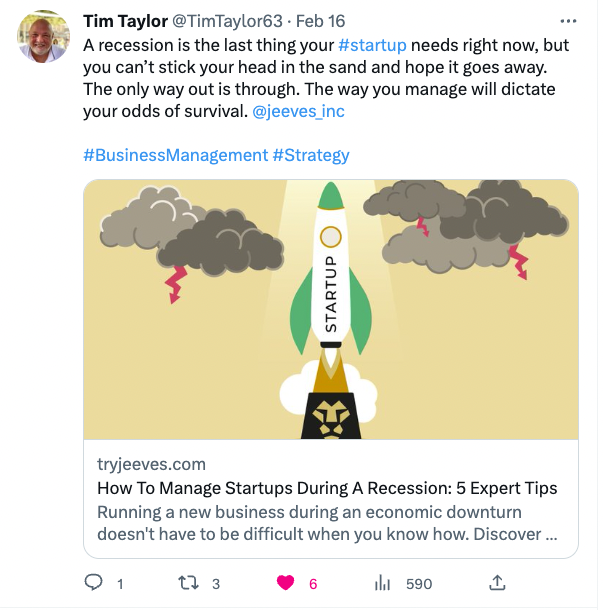
A team that can be flexible
At Mint Studios, we like to think of ourselves as an extension of our client’s marketing team. Jeeves is a startup, which means things are constantly changing. Since we’re a small and nimble team, we easily adapt to any new product launches or pivots. We’re also a big believer that a team of 2 or 3 people can be more effective than a team of 5 or 8 people. We focus on being effective and lean, so we can deliver results.
With Jeeves, we’re able to decide on content ideas month to month, and work closely with the team who help us find people to interview and content ideas that will bring in more qualified leads. For example, when Jeeves wants to target a new audience, we take the time to sit down with an expert on their team to understand this new audience better.
The nimbleness and focus on understanding the customer allows us to be a lot more aligned with the Jeeves team.
We’re grateful for the opportunity to work with an incredible company like Jeeves and to be part of their growth journey. Our alignment and engagement means that we can continue working together in a way that brings in real results. Sabena Quan, Marketing Manager at Jeeves shares this testimonial on our work together:
“We went from getting no leads from the blog to ranking on Google for top keyphrases and getting a 10% increase in leads month over month from the blog. It’s great to finally work with a content agency that actually wants to help us grow, and not just deliver blog posts.
Thanks to the incredible Mint Studios team for these results. Specifically:
- Michelle Maiellaro
- Suzanne Berthuy






